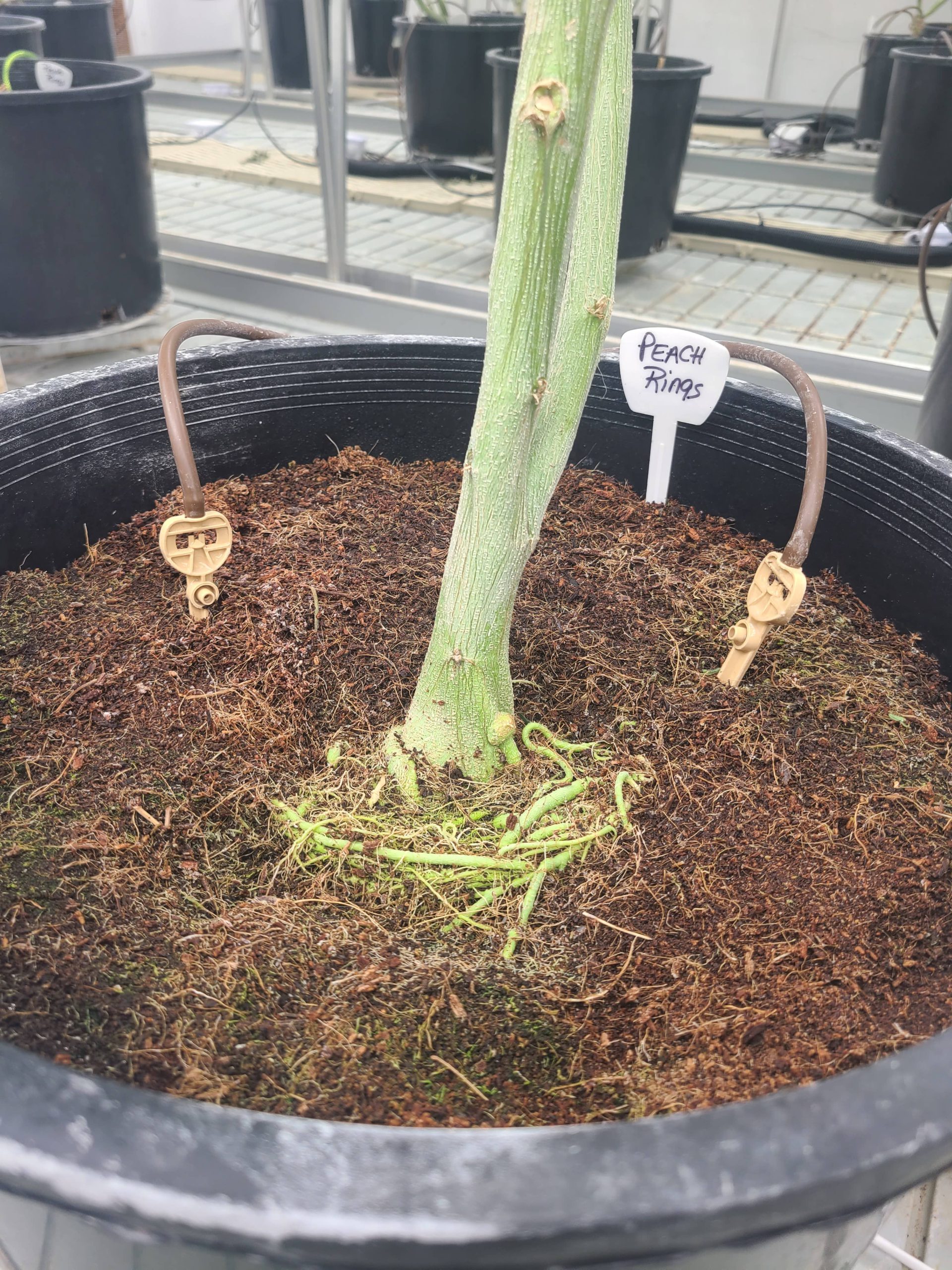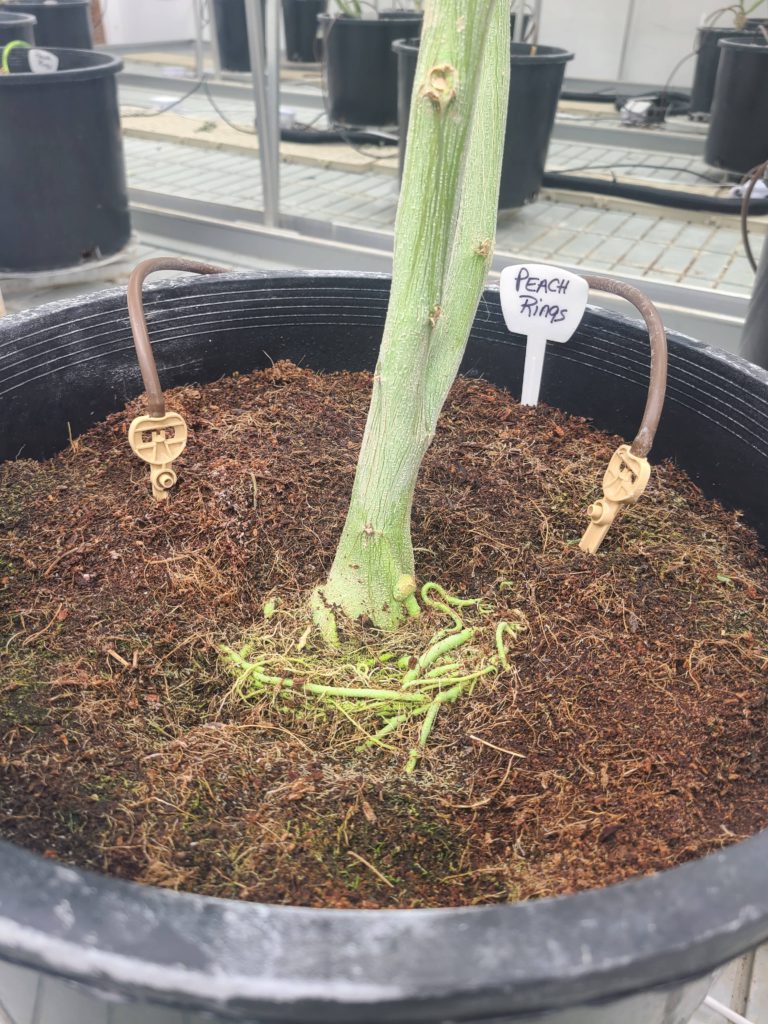Proper cannabis watering techniques can make a significant difference in the health, growth, and yield of cannabis plants. This post will explore the importance of watering cannabis to optimal levels, exploring concepts such as volumetric water content and watering to dryback percentages. Understanding these principles will empower growers to cultivate healthier, more robust cannabis plants and maximize their harvests.
Understanding Volumetric Water Content (VWC)
Volumetric Water Content (VWC) is a concept in cannabis cultivation, referring to the amount of water present in the soil or growing medium. It’s typically expressed as a percentage and represents the volume of water relative to the total volume of the soil. Maintaining the right VWC is essential for ensuring that cannabis plants receive adequate hydration without drowning or experiencing water stress.
The optimal VWC for cannabis plants varies depending on factors such as the stage of growth, environmental conditions, and the specific strain being cultivated. In general, seedlings and young plants prefer higher VWC levels to support vigorous root development and initial growth. As plants mature, VWC levels may need to be adjusted to accommodate changes in water requirements.
VMC can be calculated through use of other growing technology such as weight-based sensors. Weight-based sensors measure the actual weight of the plant and its growing medium to determine moisture levels and the dryback is determined by tracking the decrease in weight as water is used by the plant and evaporates from the growing medium.
Benefits of Monitoring Volumetric Water Content
1. Optimized Nutrient Uptake: Proper VWC levels ensure that nutrients are readily available to the roots, promoting healthy growth and development.
2. Prevention of Water Stress: Monitoring VWC helps prevent under-watering or over-watering, both of which can lead to stress and stunted growth.
3. Enhanced Oxygenation: Maintaining optimal moisture levels facilitates proper oxygenation of the root zone, preventing root suffocation and promoting robust root growth.
4. Improved Disease Resistance: Consistent VWC levels contribute to overall plant health, reducing the risk of root rot and other moisture-related diseases.
Watering to Dryback Percentages
Watering to dryback percentages is another valuable technique used by cannabis growers to optimize watering schedules and ensure proper root development. Dryback refers to the period between watering when the growing medium begins to dry out. By allowing the medium to partially dry before watering again, growers encourage root exploration and discourage issues like root rot caused by over-saturation.
Determining the ideal dryback percentage involves carefully observing plant behavior and monitoring the moisture levels of the growing medium. Generally, growers aim for a balance between providing adequate hydration and allowing enough dryback to promote healthy root growth. This balance may vary depending on factors such as the type of growing medium, container size, and environmental conditions.
Benefits of Watering to Dryback Percentages
1. Encourages Root Growth: Allowing the growing medium to partially dry between waterings stimulates root growth as the roots seek out moisture, leading to a stronger and more extensive root system.
2. Prevents Overwatering: By avoiding constant saturation of the growing medium, watering to dryback percentages helps prevent overwatering, which can suffocate roots and lead to nutrient deficiencies.
3. Enhances Nutrient Uptake: Healthy root systems resulting from proper dryback percentages improve the plant’s ability to absorb nutrients, leading to improved overall growth and vitality.
4. Increases Drought Tolerance: Cannabis plants subjected to periodic dryback become more resilient to drought conditions, as they develop roots capable of accessing moisture from deeper layers of the growing medium.
Watering Cannabis Plants During Various Developmental Stages
Watering practices play a pivotal role in ensuring that cannabis plants receive the appropriate hydration levels necessary for growth and development at each stage of their life cycle. Here’s a detailed overview of the science behind cannabis watering techniques:
Seedling Stage
During the seedling stage, cannabis plants have delicate root systems that require careful attention to watering. Overwatering can lead to damping off and other fungal diseases, while underwatering can stunt growth. Maintaining a consistent level of moisture in the growing medium is essential to support healthy root development without suffocating the roots. Water seedlings with a gentle mist or use bottom watering techniques to encourage root growth downward.
Vegetative Stage
In the vegetative stage, cannabis plants experience rapid growth as they develop foliage and establish a robust root system. During this stage, plants require more water to support their increased metabolic activity and transpiration. Watering frequency may need to be adjusted based on environmental conditions such as temperature and humidity levels. It’s essential to water thoroughly, ensuring that the entire root zone is adequately hydrated without causing waterlogged conditions.
Flowering Stage
As cannabis plants transition into the flowering stage, their water requirements may change. While plants still need regular watering to support growth and nutrient uptake, overwatering can be detrimental, especially during the late flowering phase when buds are developing. During this stage, it’s crucial to monitor soil moisture levels closely and adjust watering frequency as needed to prevent issues such as mold and bud rot.
Best Practices for Watering Cannabis Plants
1. Monitor Plant Levels: Regularly assess the moisture content of the growing medium using tools such as moisture meters or weight-based sensors, or by manually checking the soil’s texture and weight.
2. Establish a Watering Schedule: Develop a consistent watering schedule based on the specific needs of your plants, taking into account factors such as stage of growth, environmental conditions, and the characteristics of the growing medium.
3. Adjust Based on Plant Response: Pay close attention to how your plants respond to watering practices. Wilting or drooping leaves may indicate under-watering, while yellowing or leaf curling can be signs of over-watering.
4. Promote Proper Drainage: Ensure that containers have adequate drainage holes and that excess water can freely drain away from the root zone to prevent waterlogging.
5. Consider Environmental Factors: Factors such as temperature, humidity, and airflow can influence the rate of evaporation and water uptake by plants. Adjust watering practices accordingly to maintain optimal moisture levels.
6. Use High-Quality Water: Avoid using water that is high in salts or other contaminants, as these can accumulate in the growing medium over time and negatively impact plant health.
7. Implement Mulching: Applying a layer of organic mulch to the surface of the growing medium can help retain moisture, reduce evaporation, and promote a more stable root environment.
Watering cannabis plants to optimal levels is a fundamental aspect of successful cultivation, with profound implications for plant health, growth, and yield. By understanding concepts such as volumetric water content and watering to dryback percentages, growers can fine-tune their watering practices to meet the specific needs of their plants and maximize their potential. With careful observation, experimentation, and adherence to best practices, growers can cultivate thriving cannabis plants capable of producing bountiful harvests.


